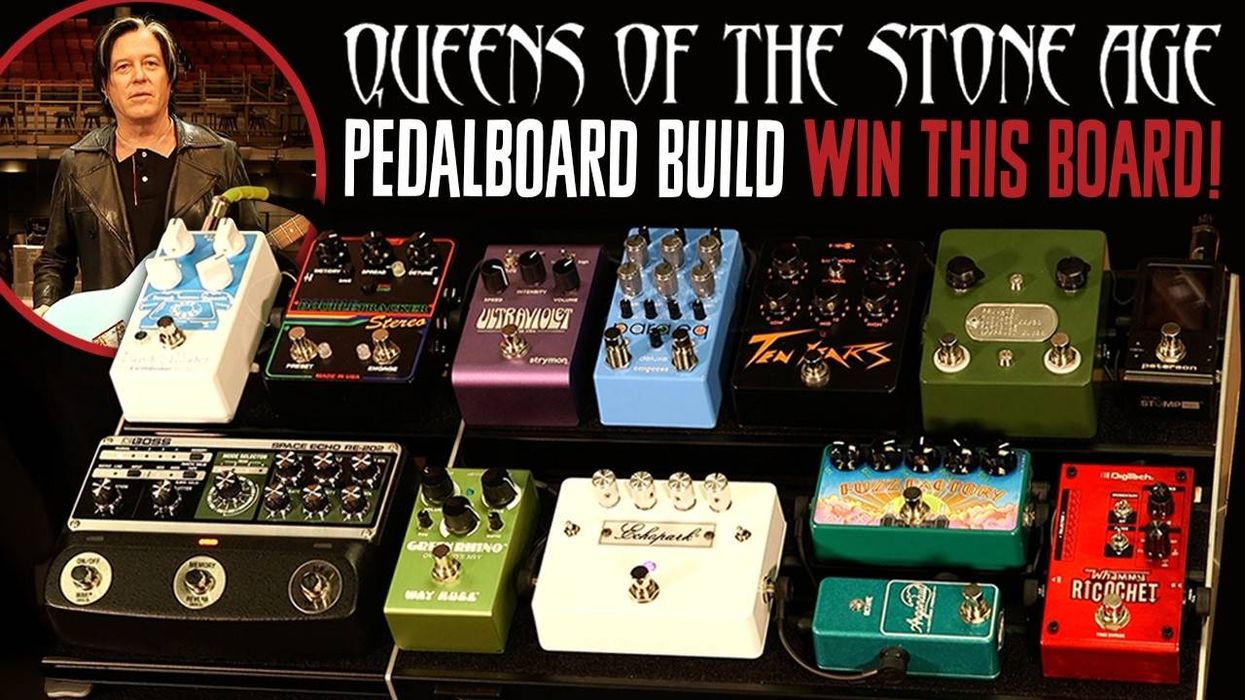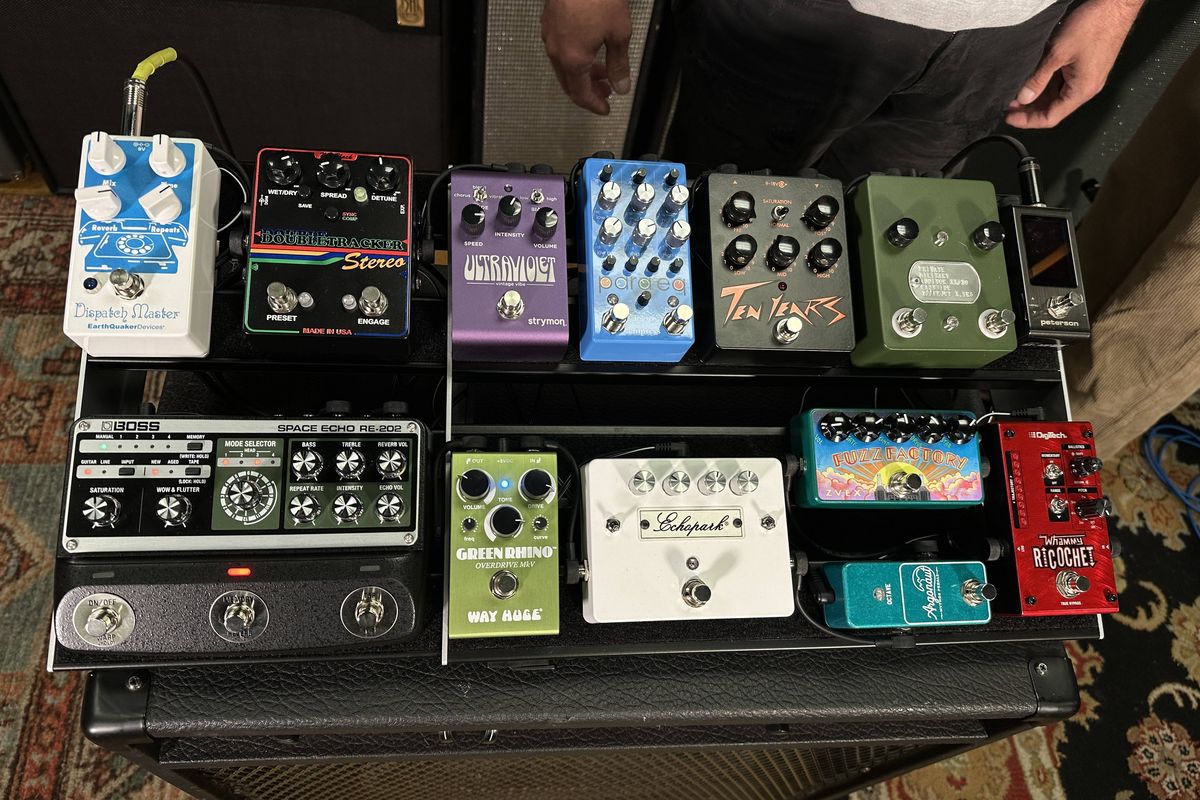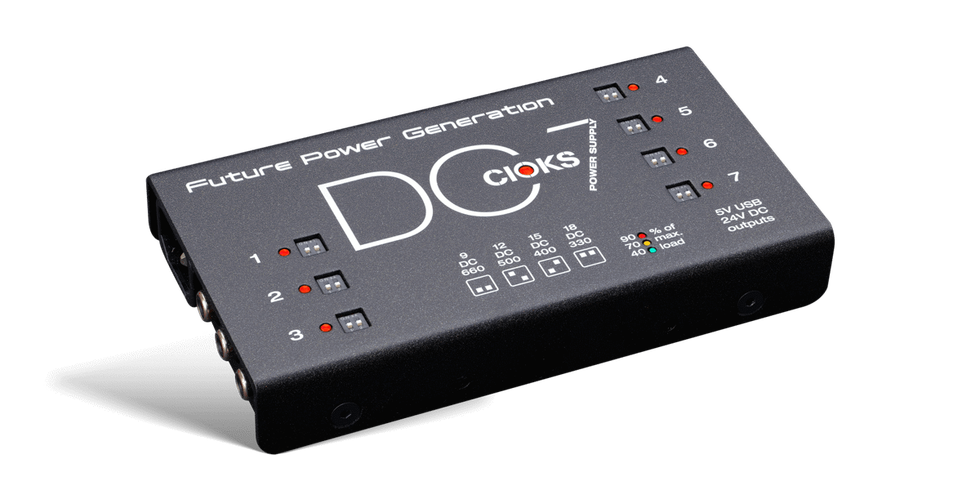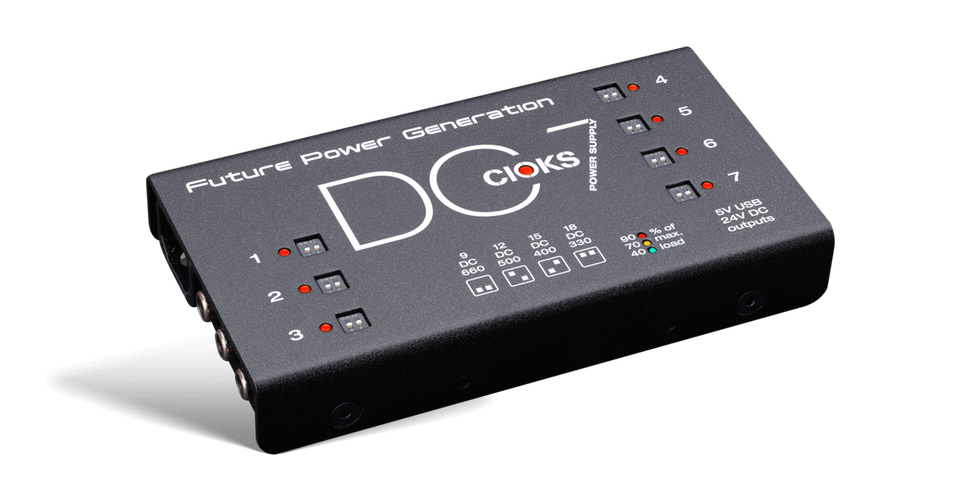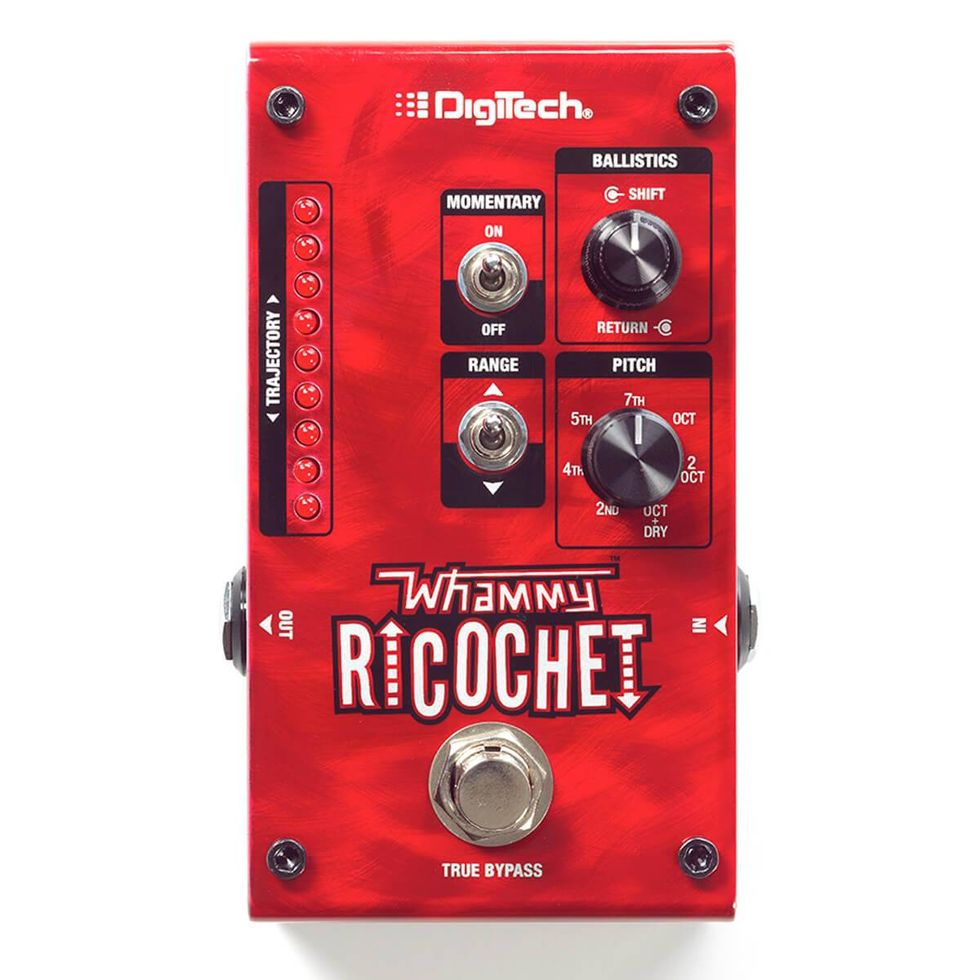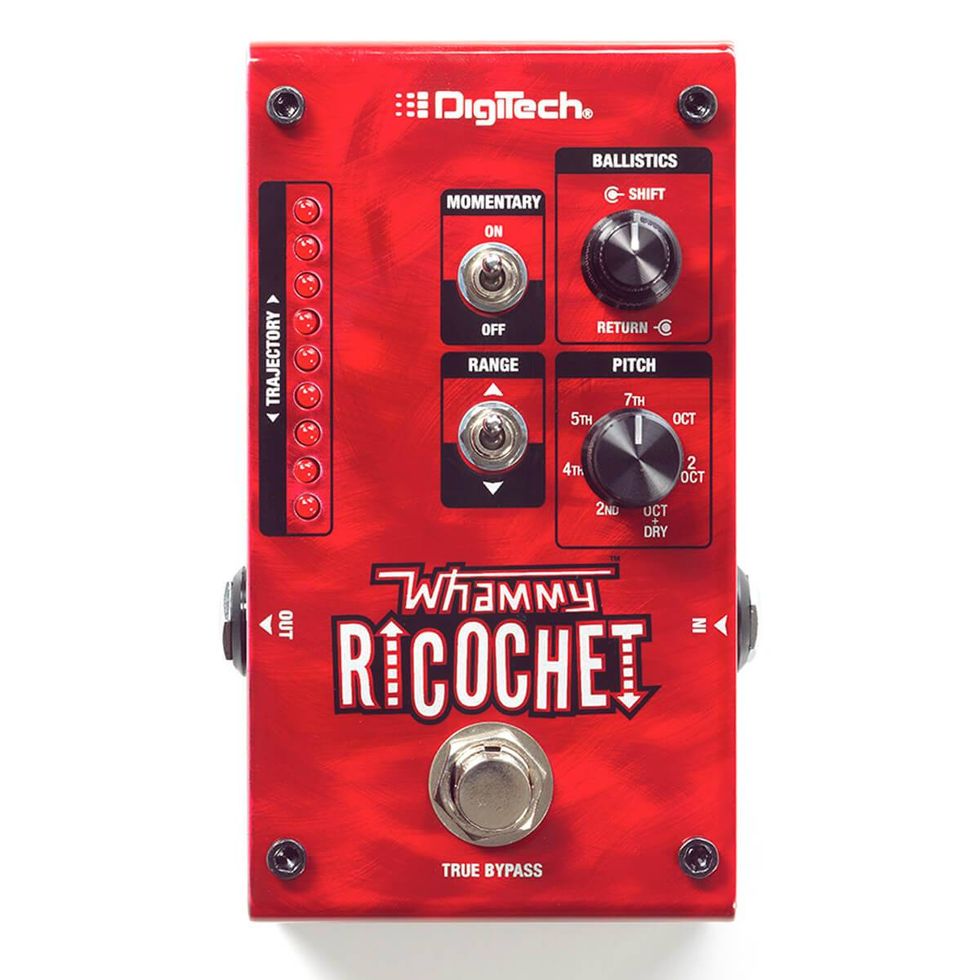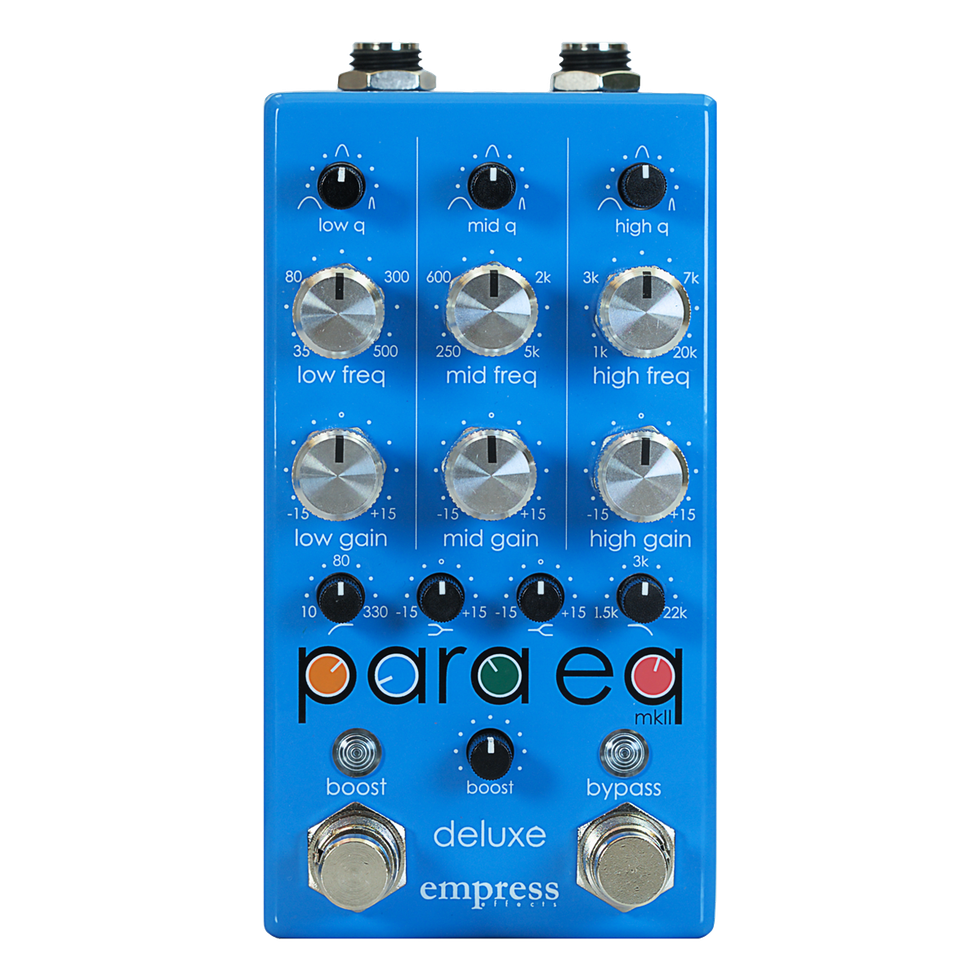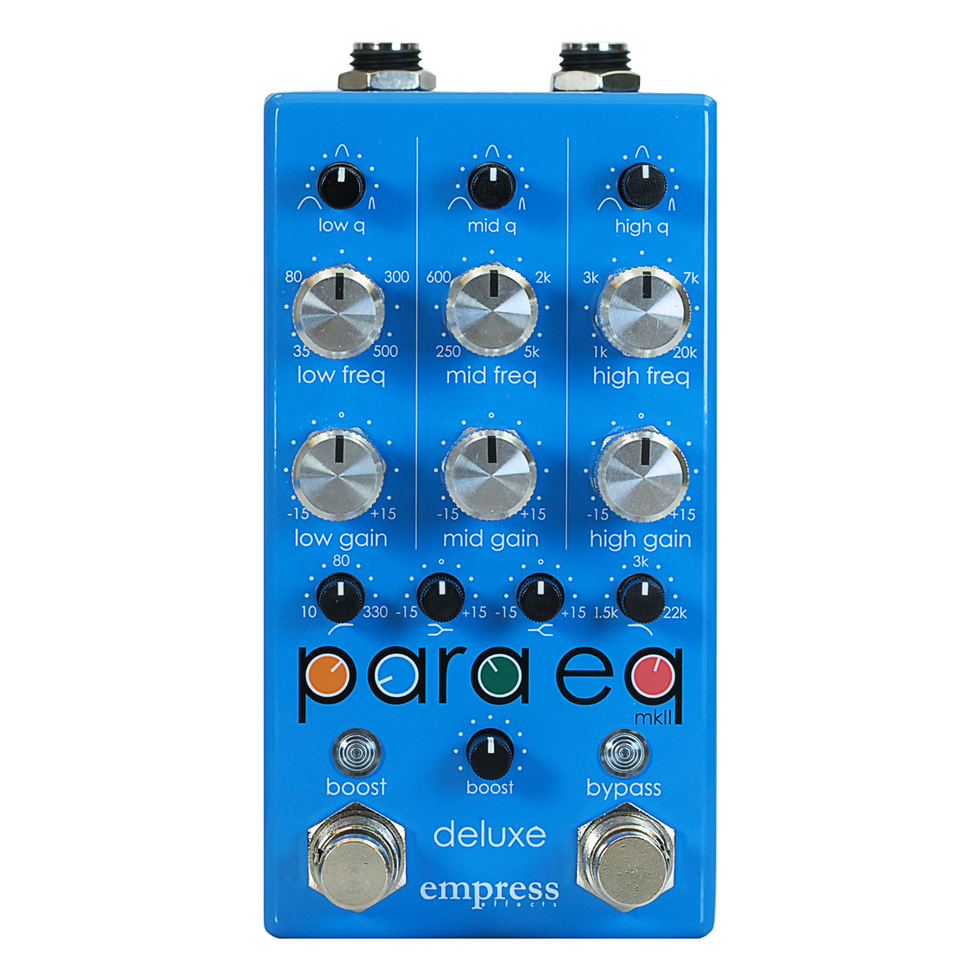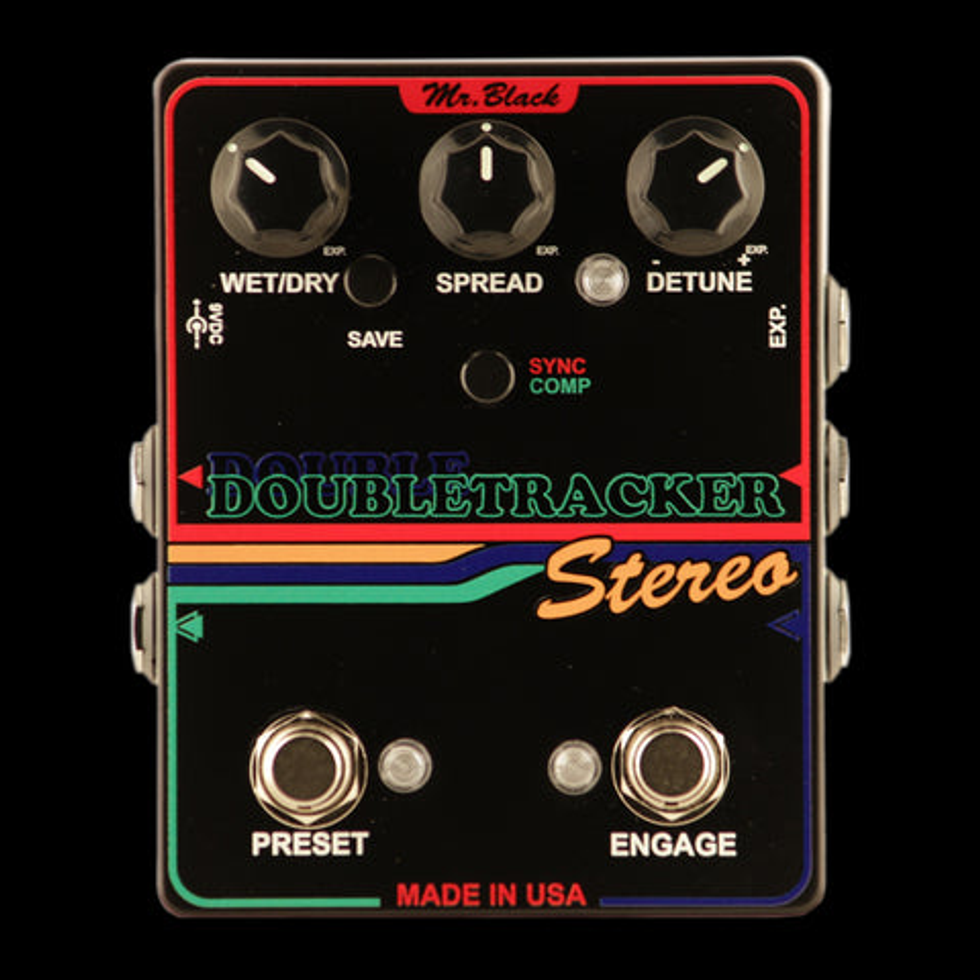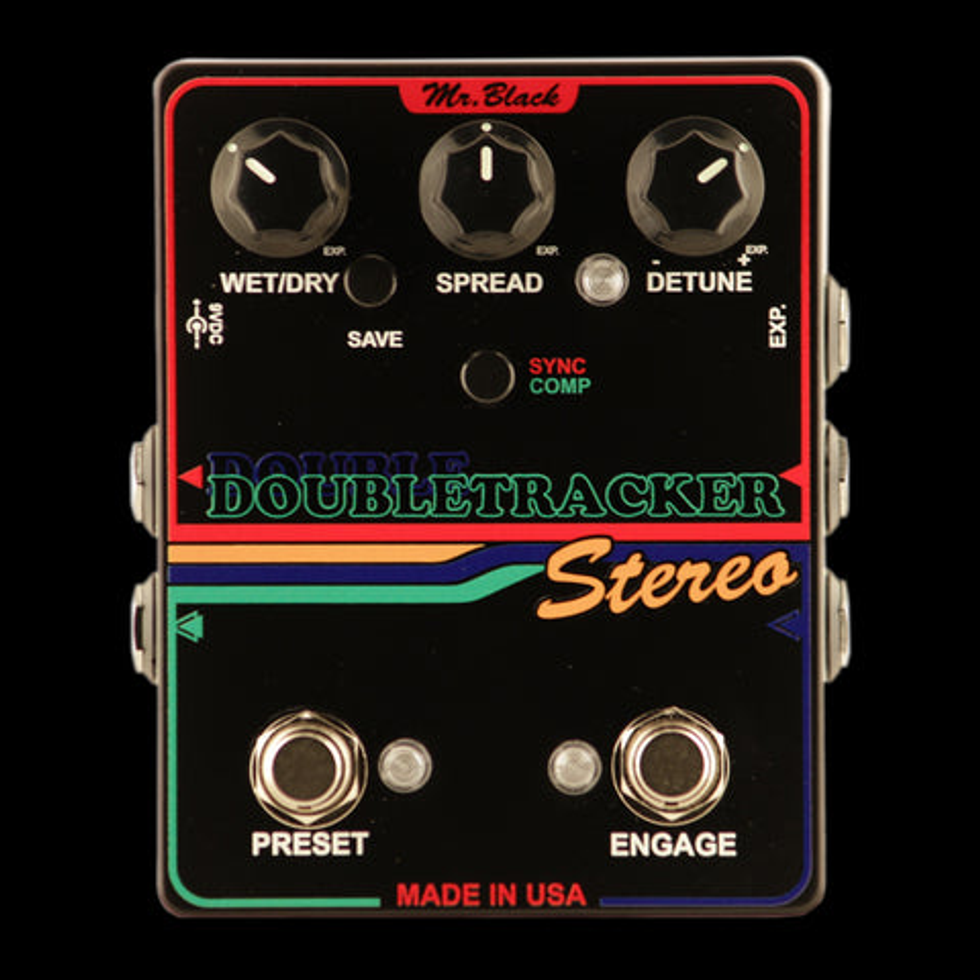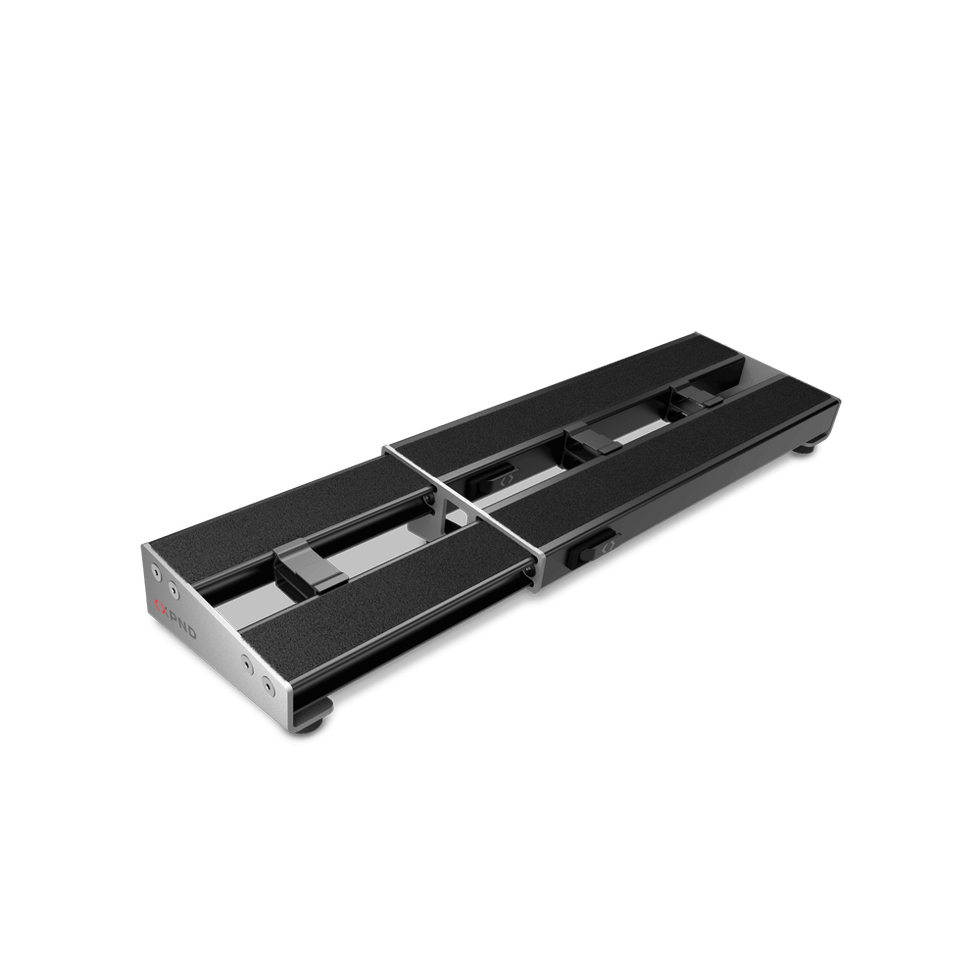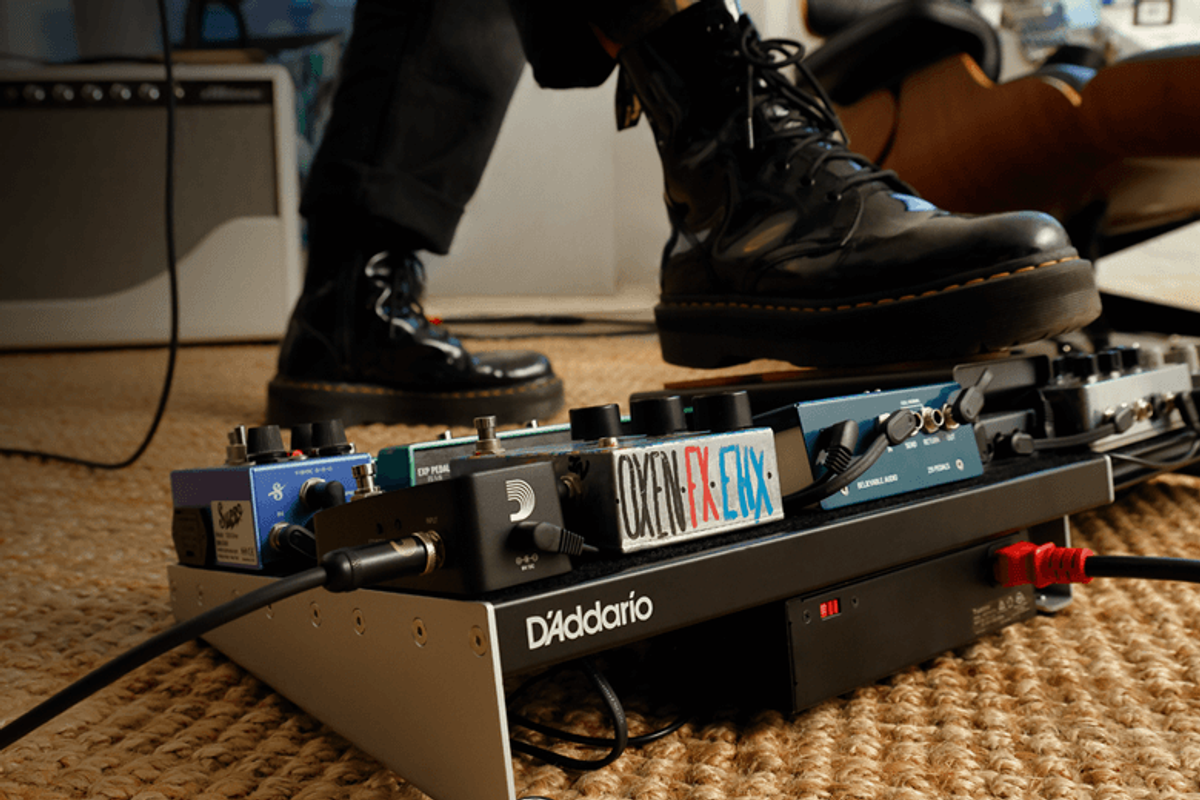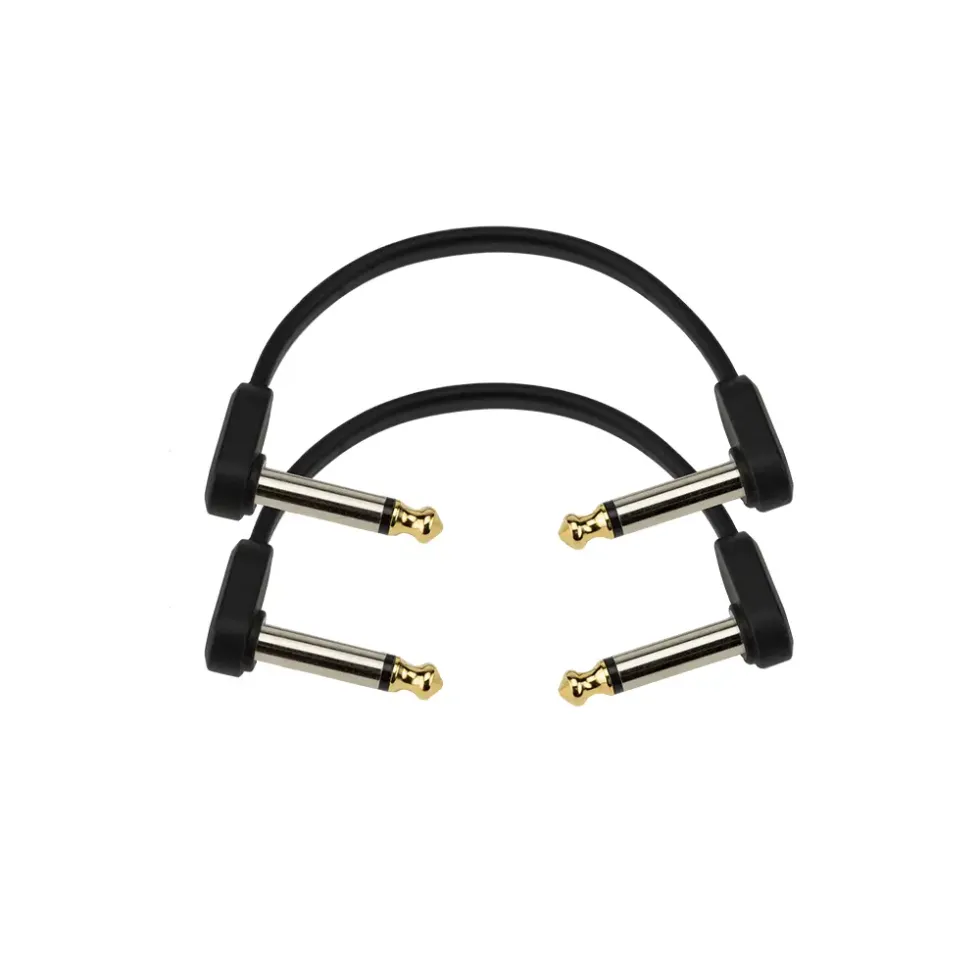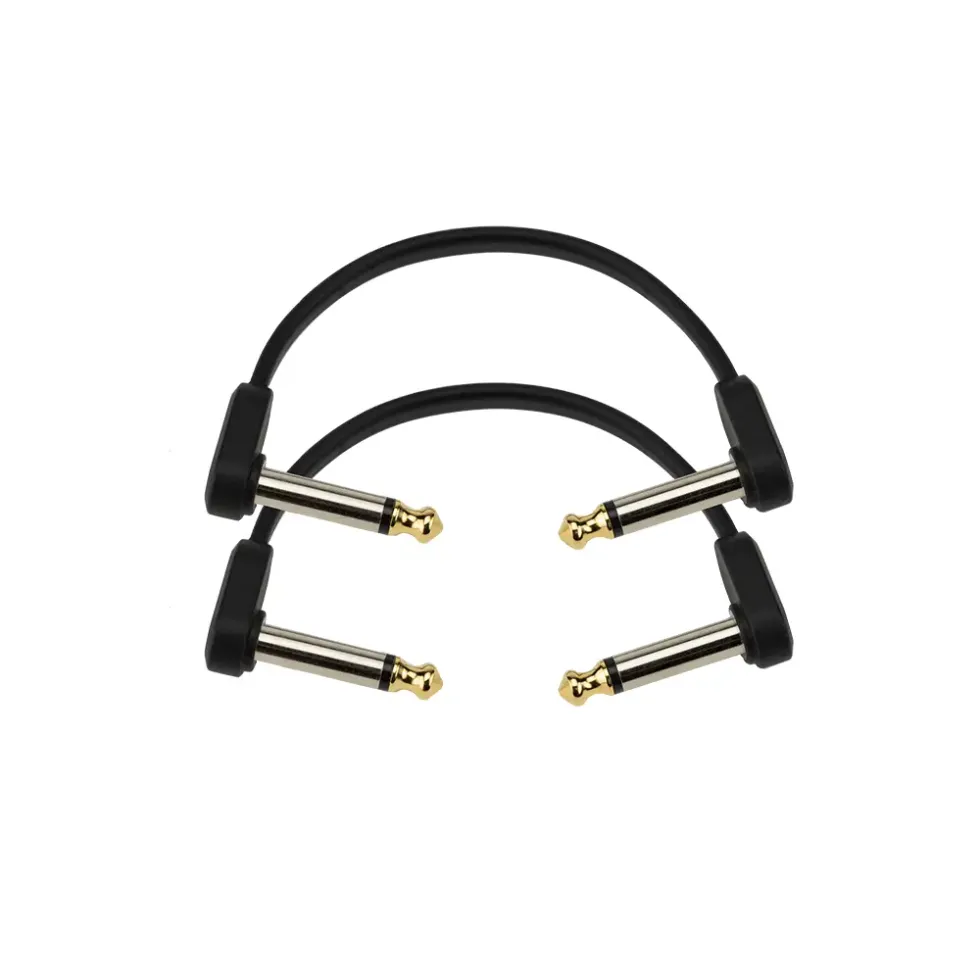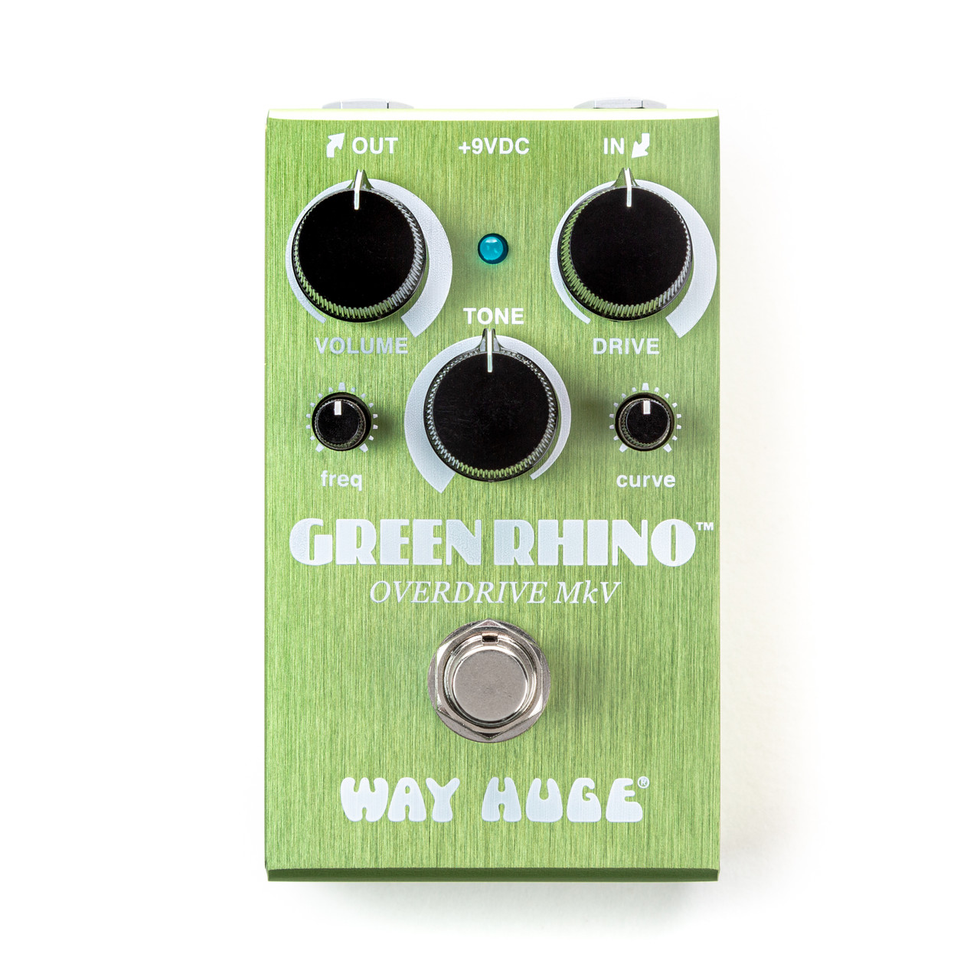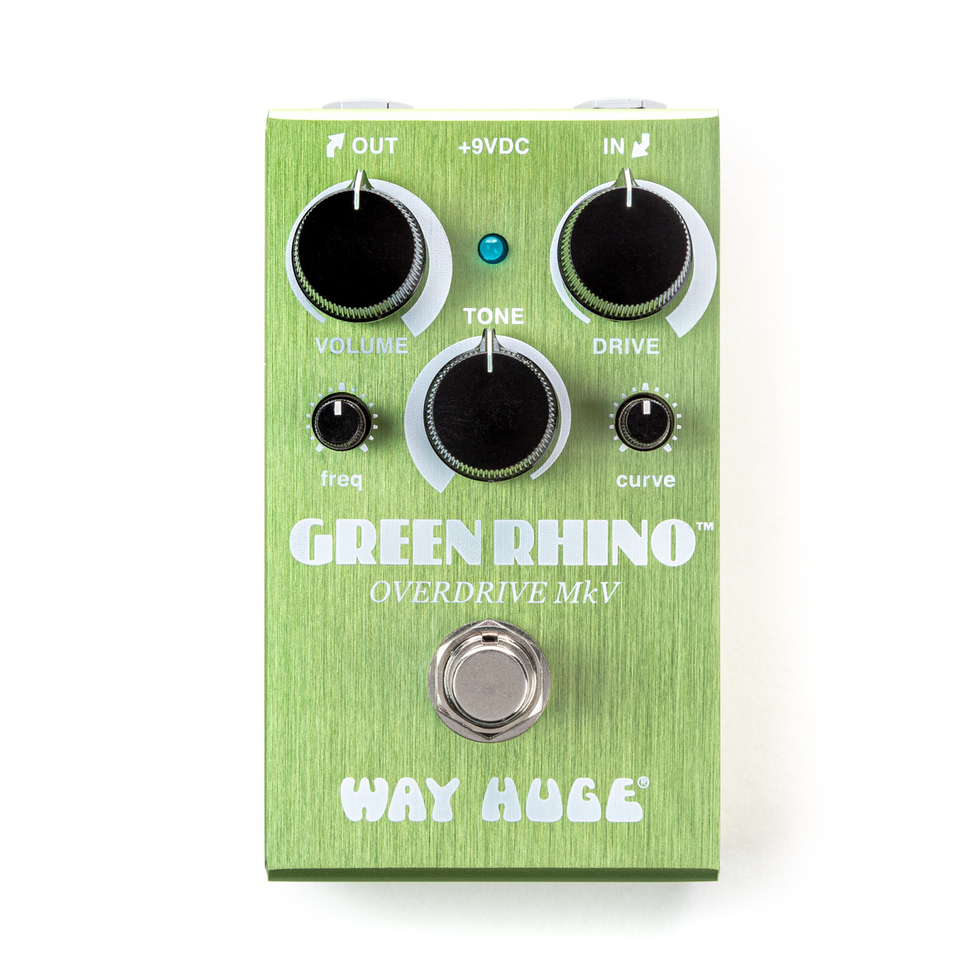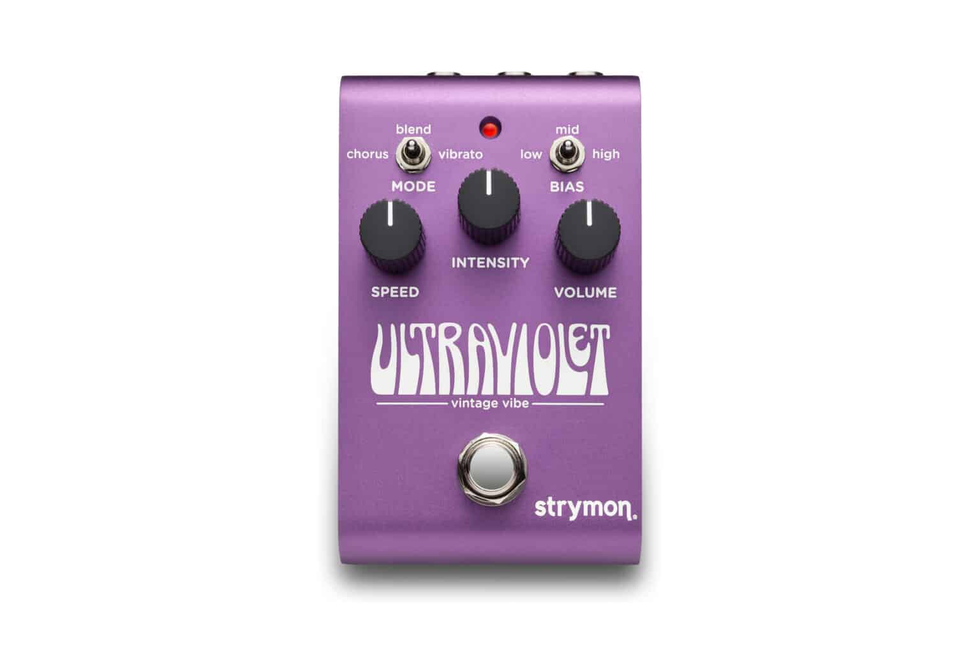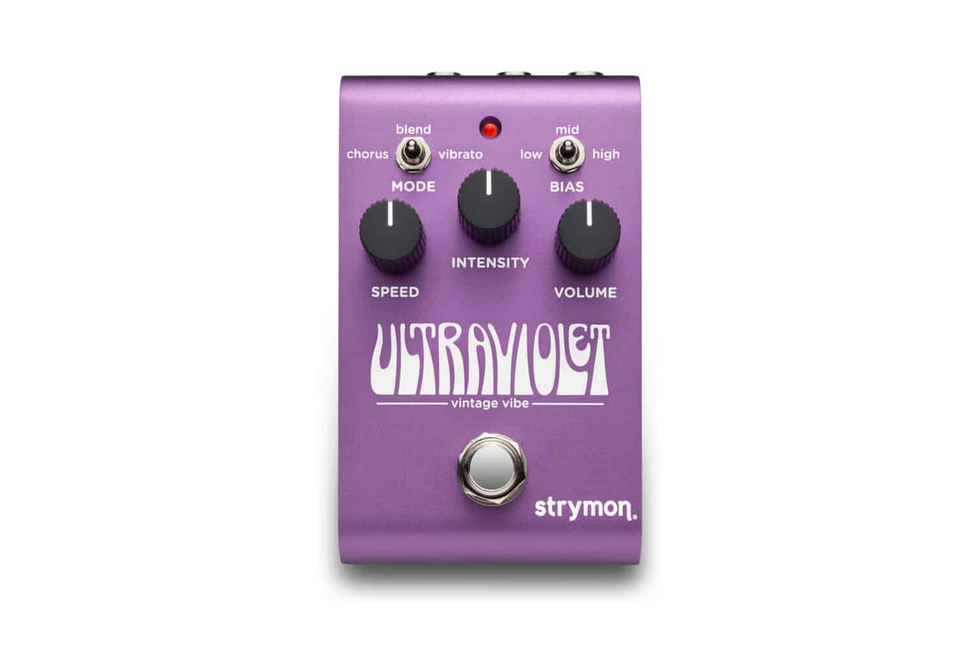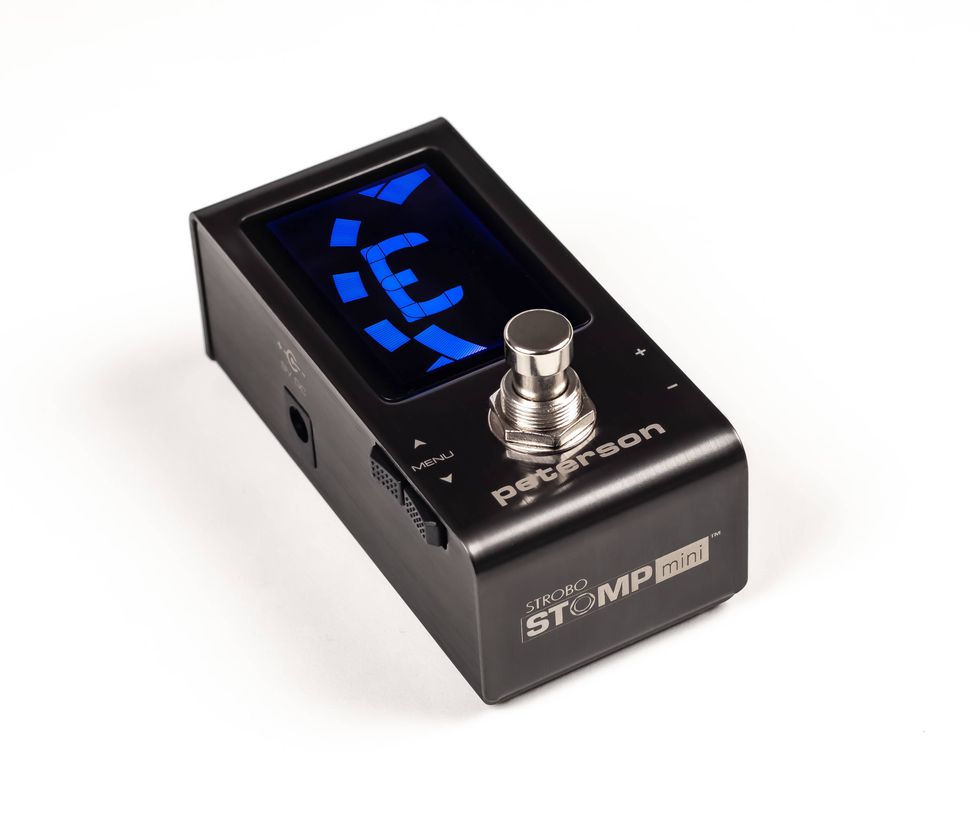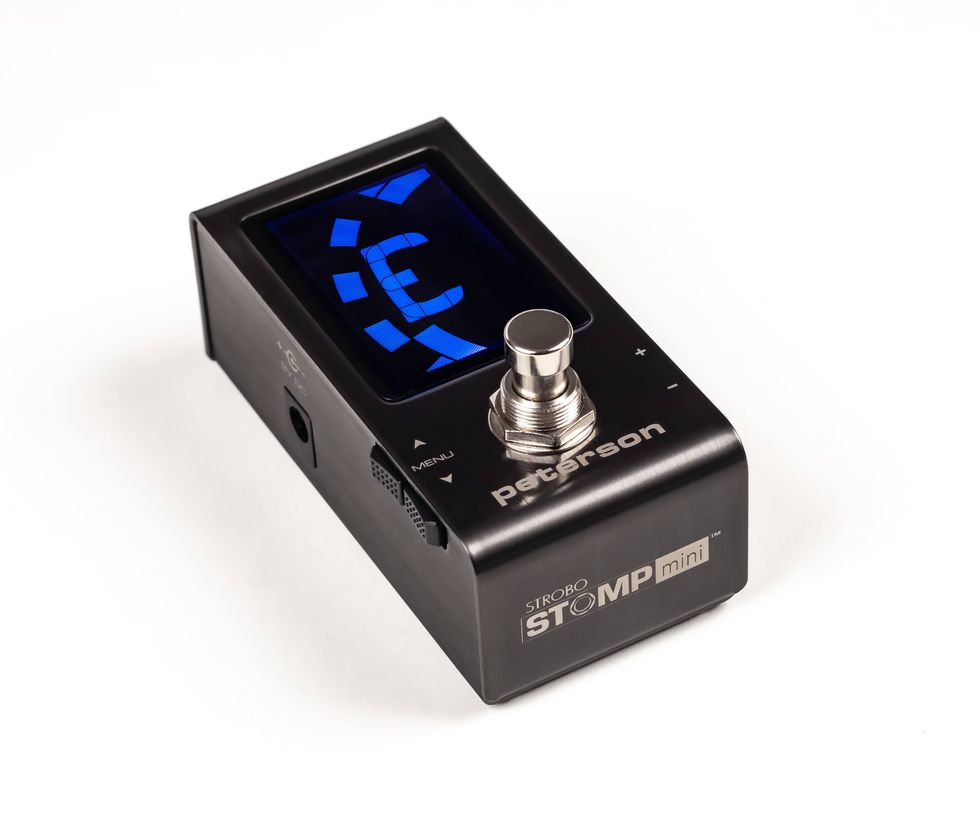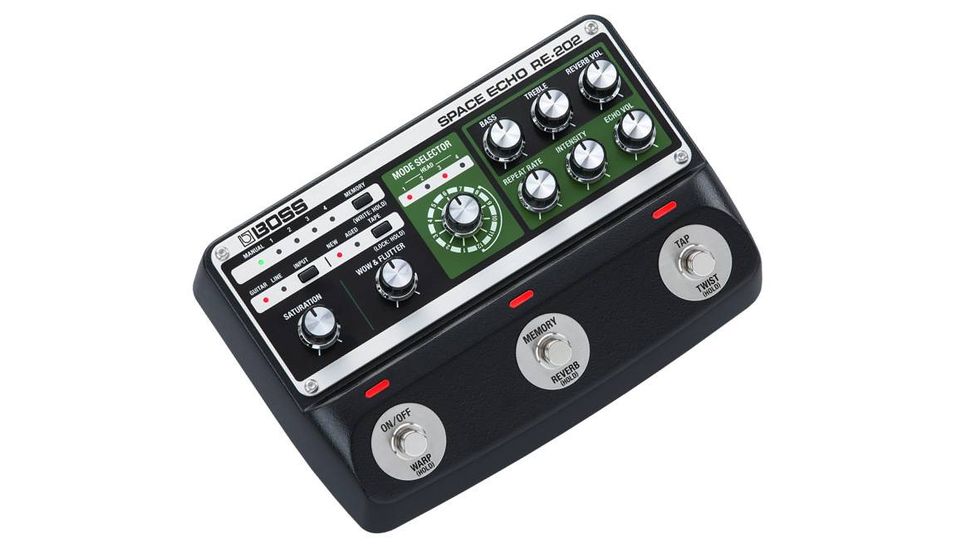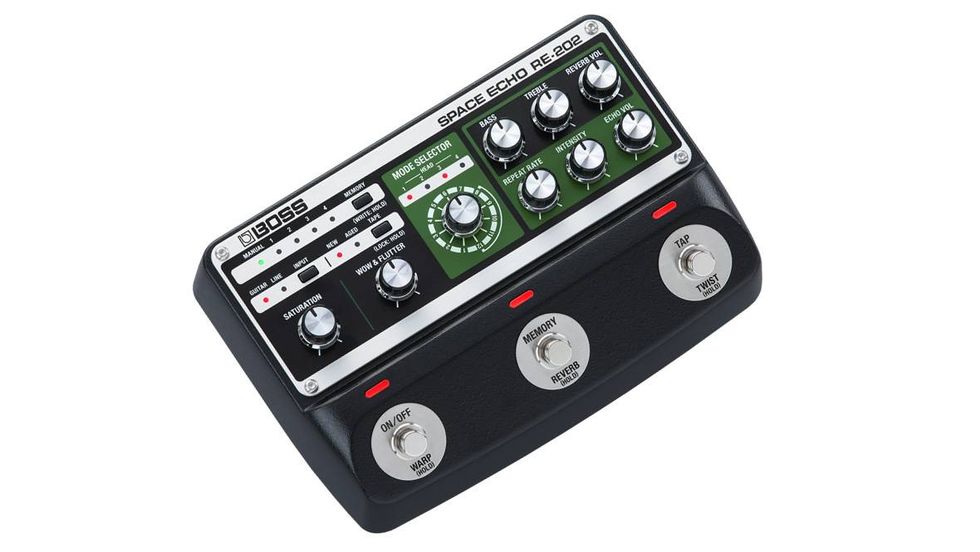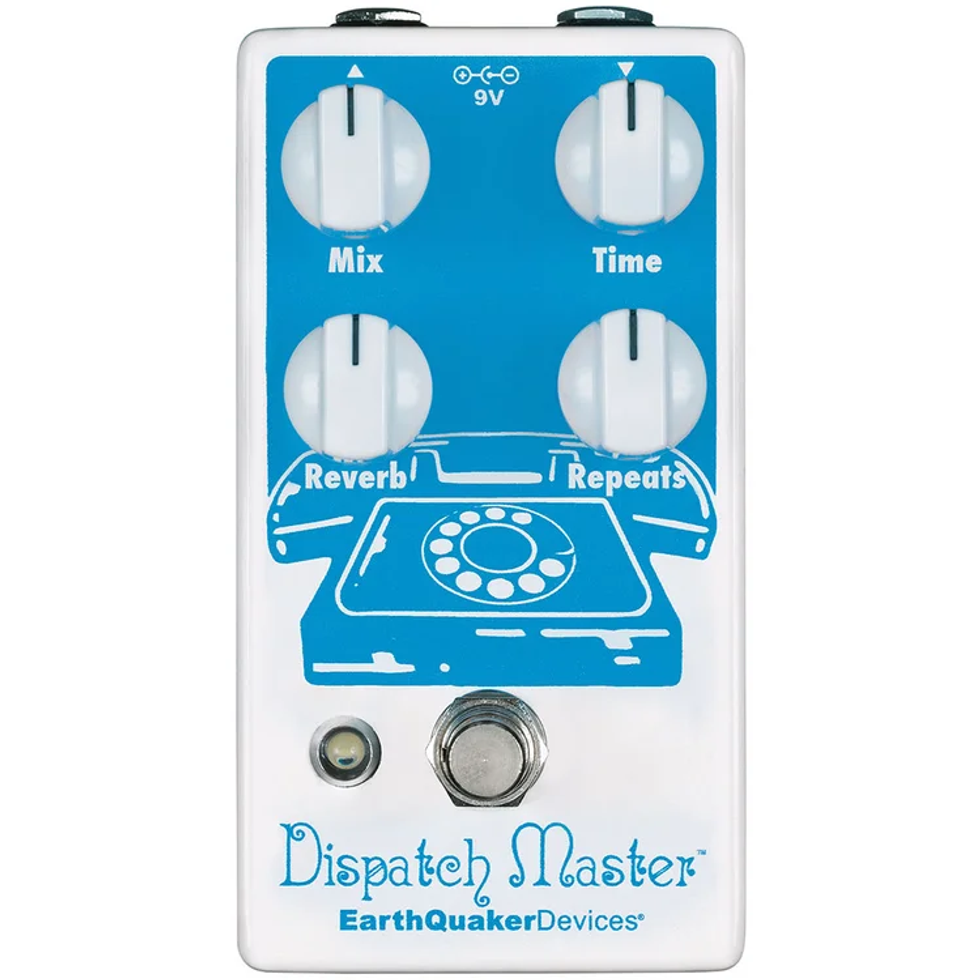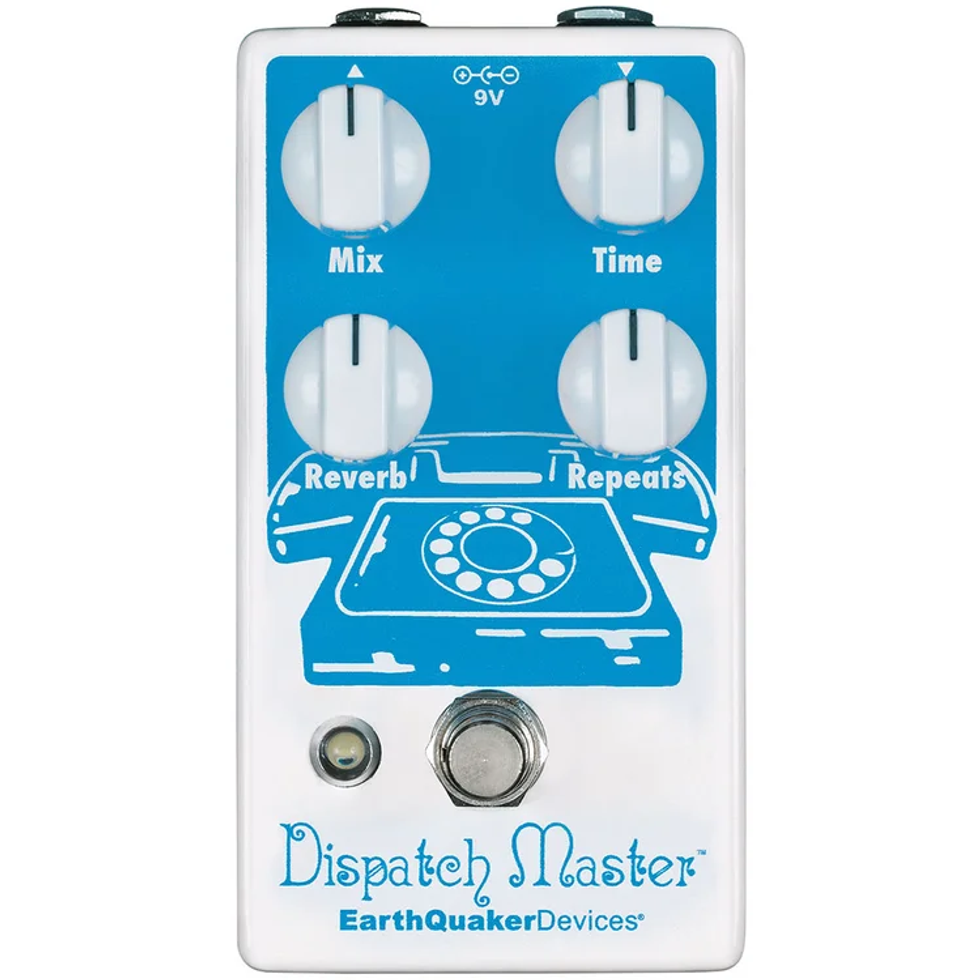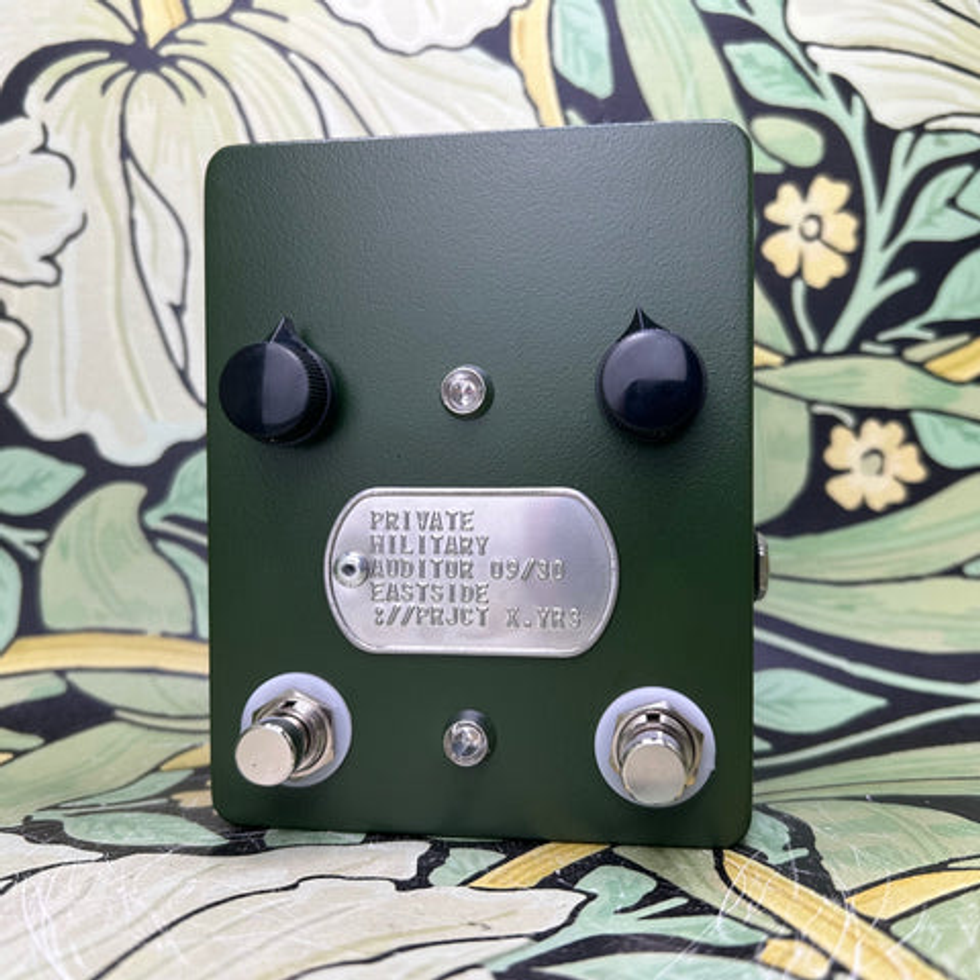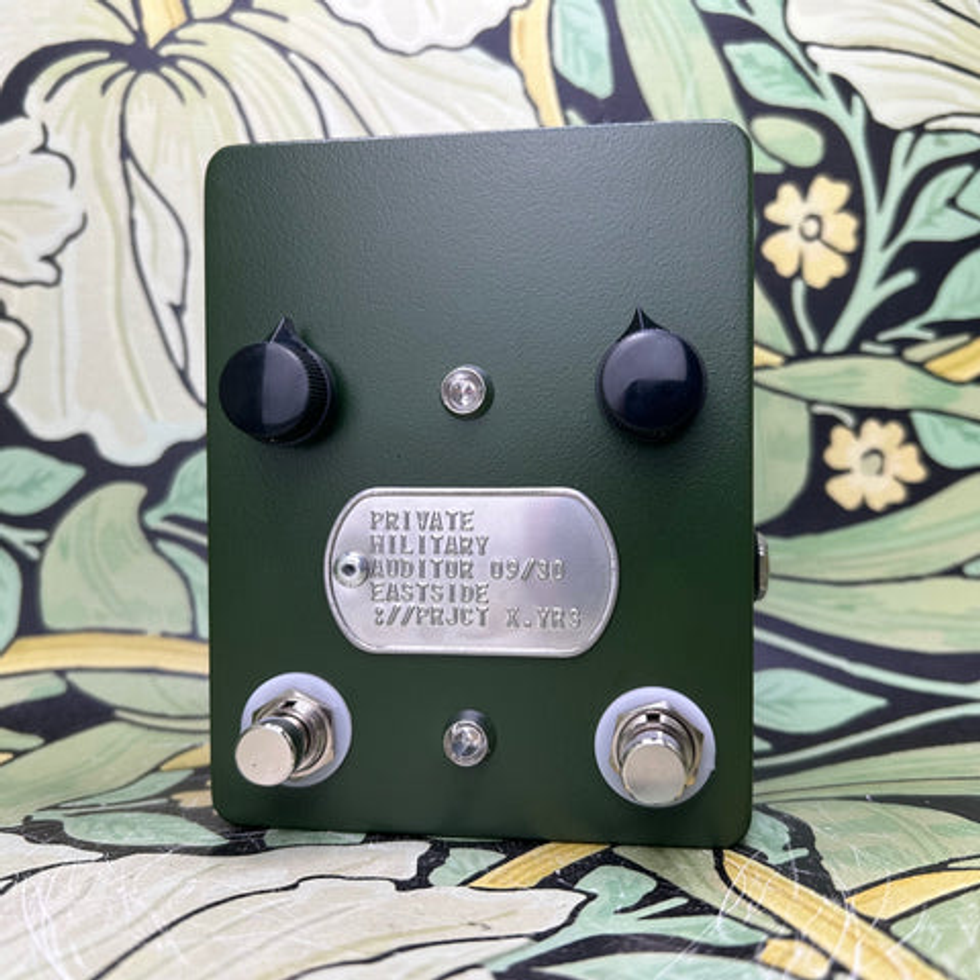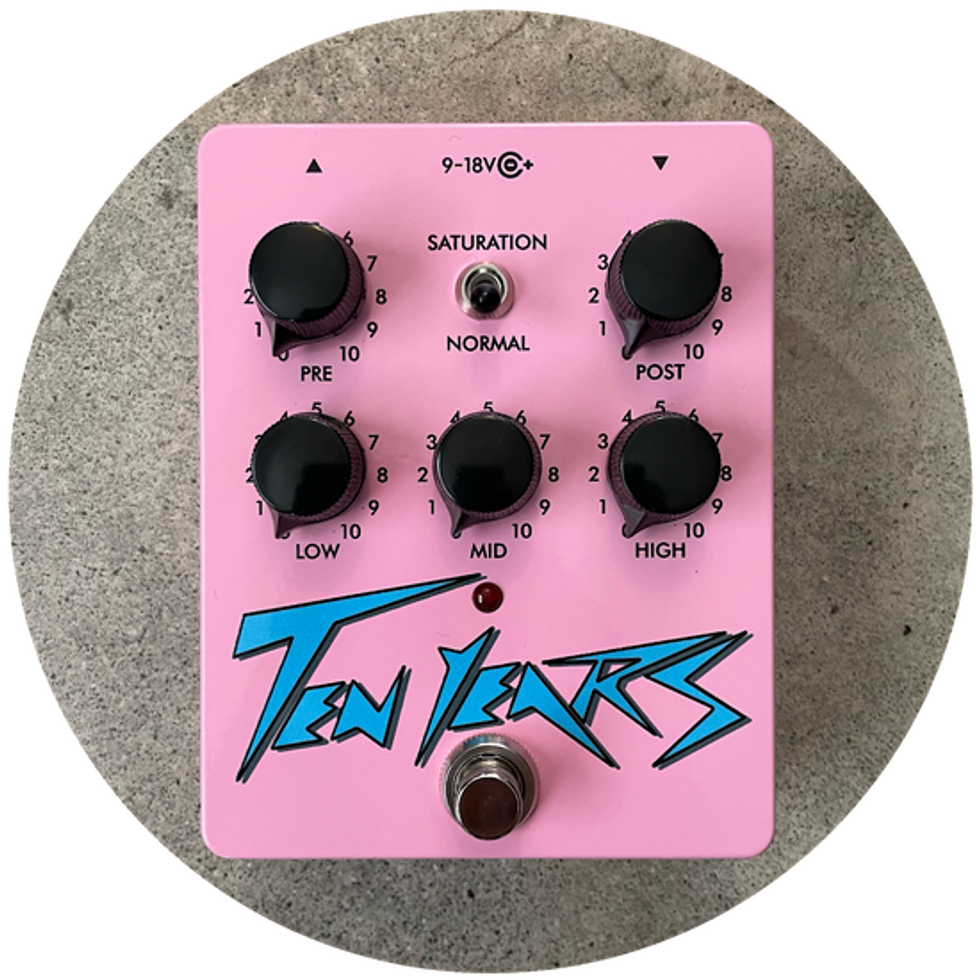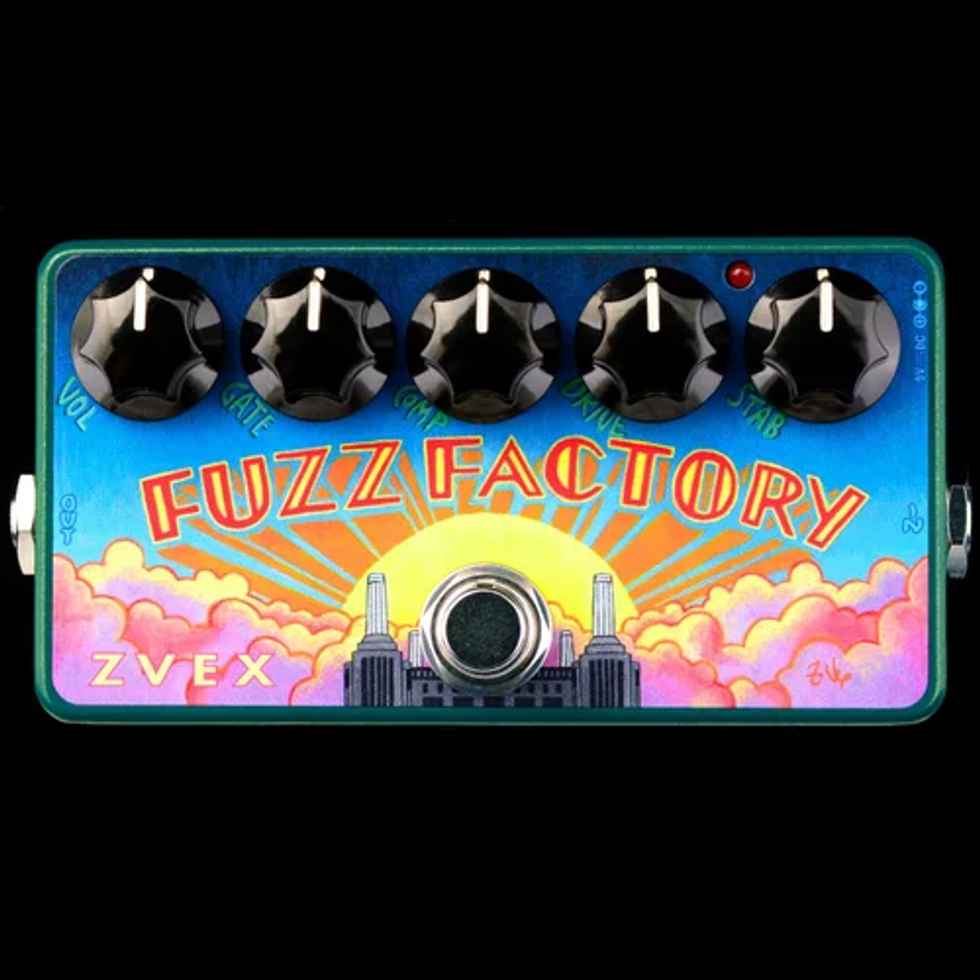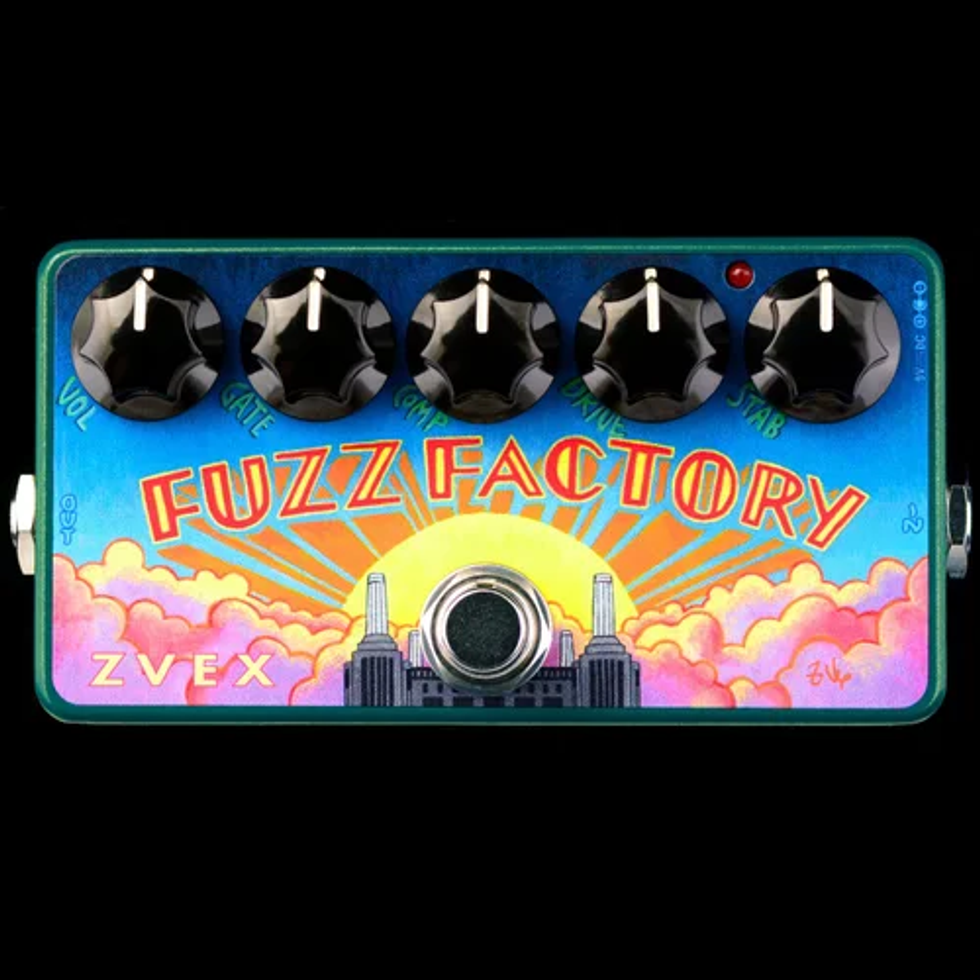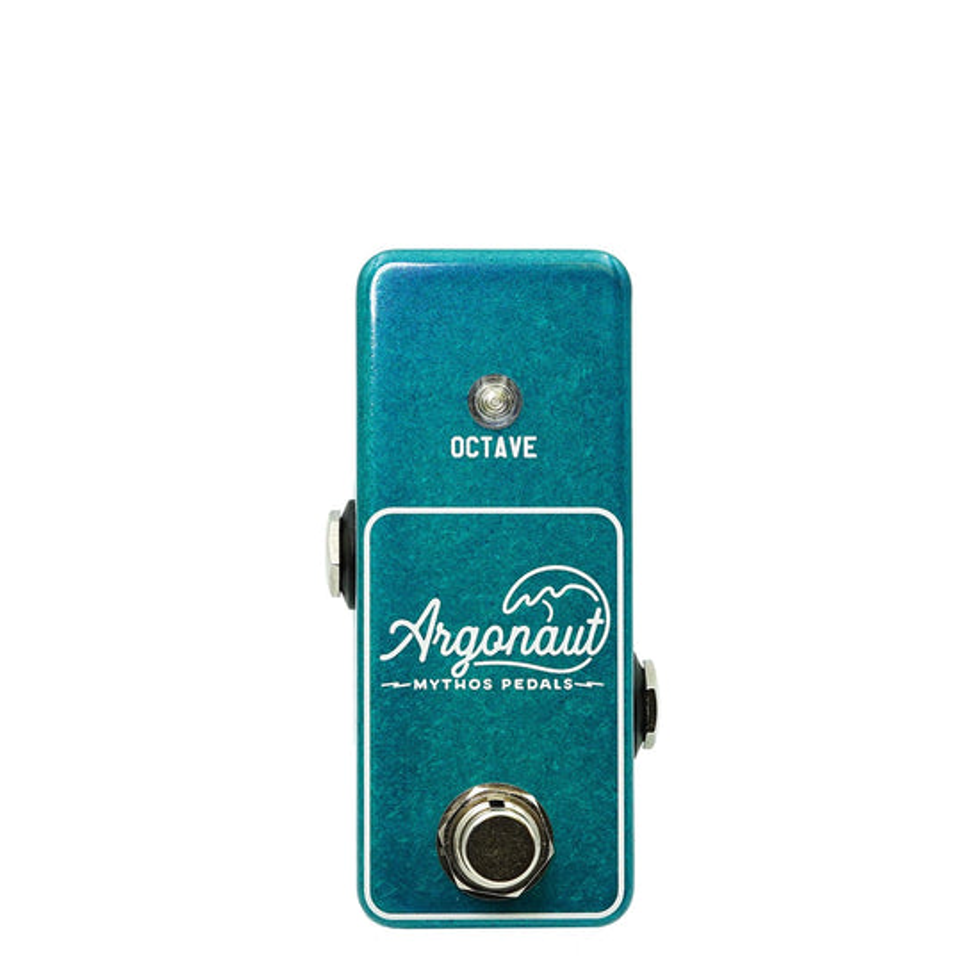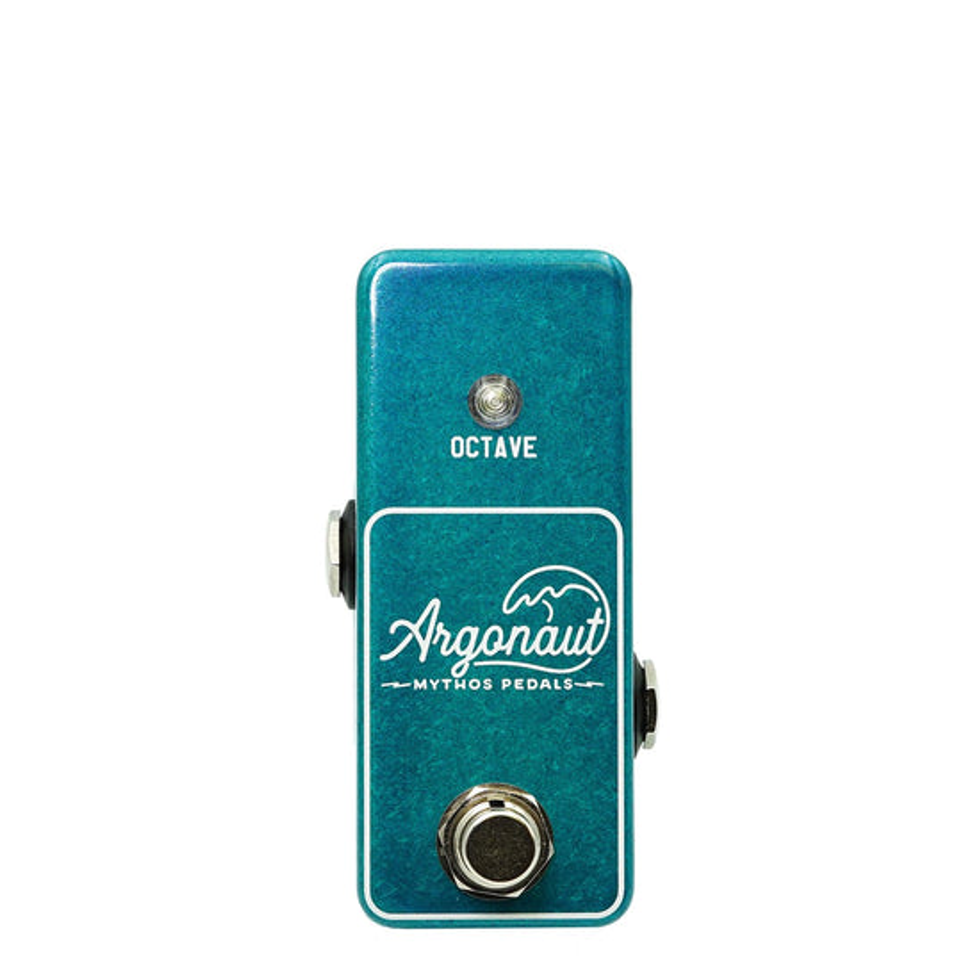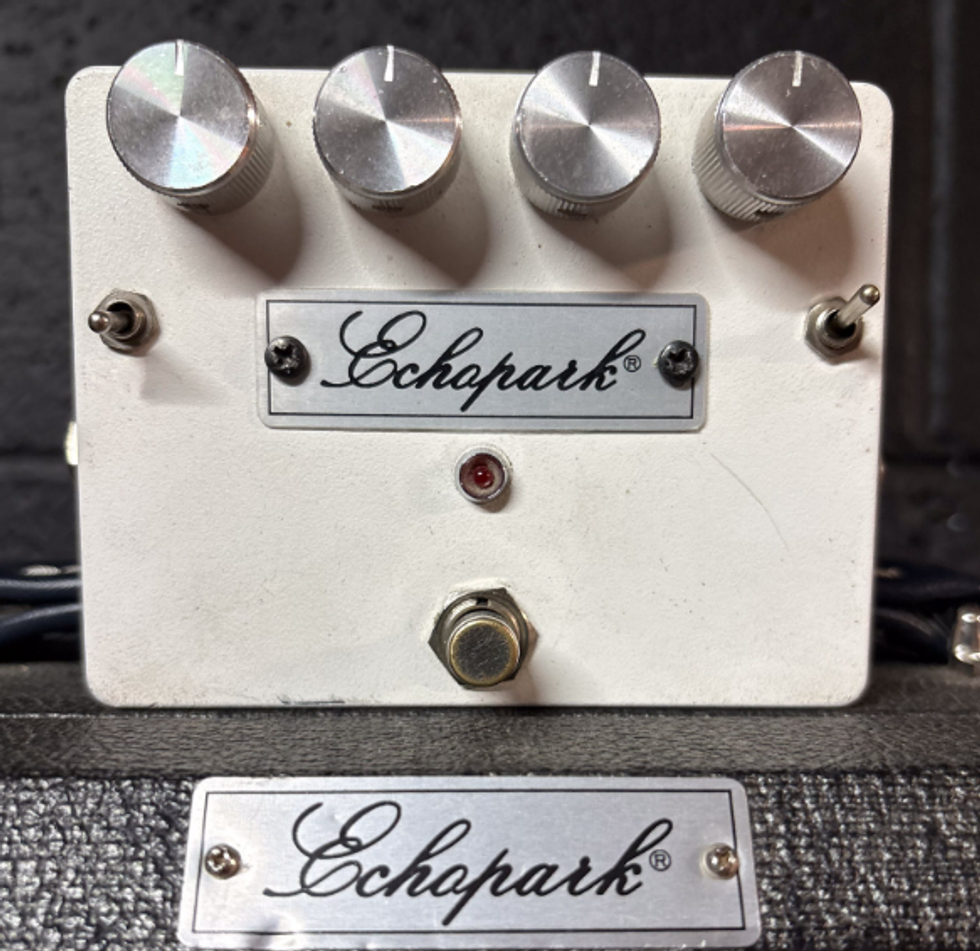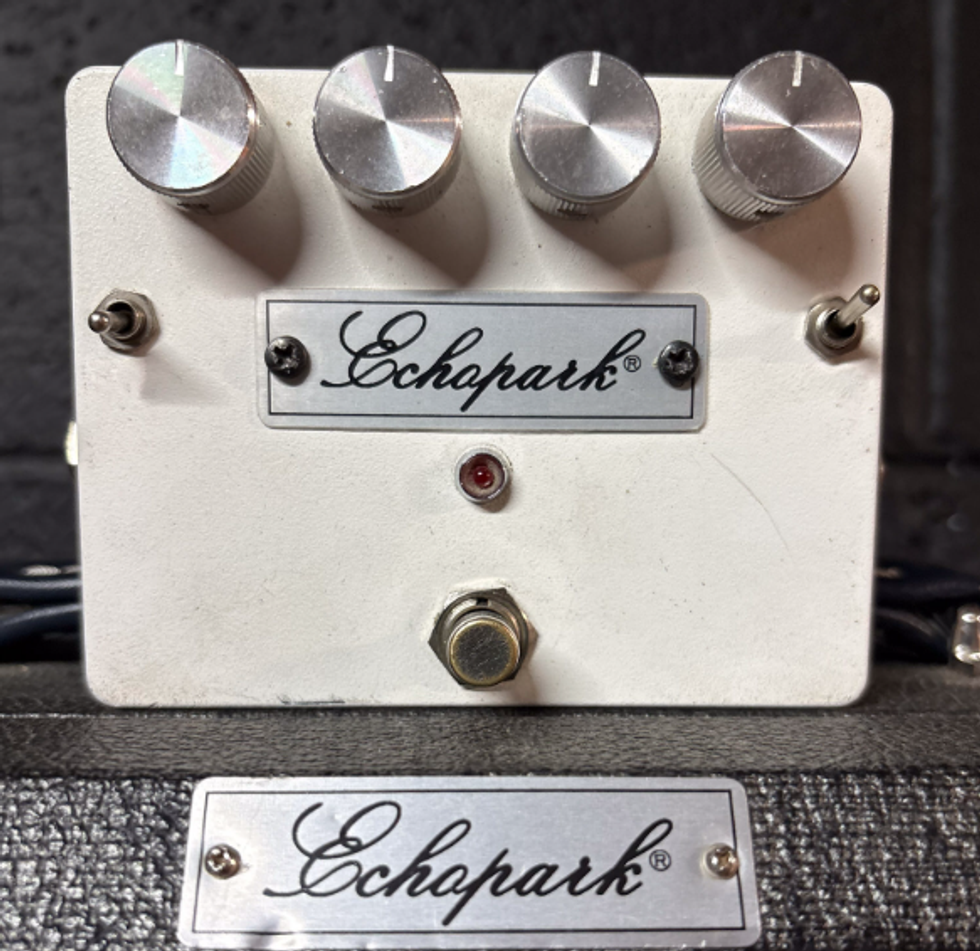Subdecay’s Liquid Sunshine overdrive pedal helped put the Newberg, Oregon, company on the stompbox map in 2004. Since then, they’ve made waves with more adventurous builds like the Noisebox harmonic frequency generator, the Prometheus filter pedal, and the unique Super Spring Theory reverb.
Their latest creation, the Vector, marks a return to the company’s overdrive origins. But as Subdecay’s recent work might suggest, it’s more than another clone in an endless sea of distortion pedals. Instead, the Vector is an 11-voice preamp featuring an analog signal path and a digital control section. In essence, you get 11 dirt boxes in one small enclosure.
One Ice Cream Cone, 11 Flavors
The Vector looks cool with its very ’80s graphics and, for as much as the pedal can do, it has a simple and intuitive control layout. Under the pedal’s three standard overdrive controls—volume, tone, and gain—is a knob that lets you choose from the Vector’s 11 distortion and drive modes: drive 1, drive 2, crunch, vintage, fuzz 1, fuzz 2, meltdown, 1980s, 1990s, modern 1, and modern 2. In some ways, each of the Vector’s 11 channels could warrant a full review. So we’ll take a quick overview of the main sounds available.
While some of the Vector’s 11 channels take inspiration from classics, they aren’t clones. For example, drives 1 and 2 are inspired by the Tube Screamer circuit, although, to my ears, they are less transparent than my TS9. If anything, these channels are closer sonically to my Boss SD-1 than my TS9.
as clean boosts
I was particularly enamored with the warm, singing sound I got with drive 1 set with tone at 1 o’clock, and gain at noon. Sustain here was excellent, and there was a buttery feel to single-note phrases. With drive 1’s gain all the way off and volume bumped up, there’s still some grit (much like the TS9), so it’s not a totally clean boost. The pedal’s excellent sensitivity to dynamics, however, lets you manipulate the interplay between clean and crunch with the intensity of your pick attack.
Crunch and vintage—channels 3 and 4, respectively—have lots of classic Marshall muscle and were an especially good fit for Van Halen-type rhythm figures that mix double-stops with arpeggiated figures. If you’re a heavy-rock rhythm player, you could live exclusively on these channels.
Fuzz 1 and fuzz 2 offered a spitty, gnarly sound perfect for in-your-face garage rock riffs. Even with the pedal’s tone knob rolled down to 9 o’clock, there was still a lot of top end (and a lot of attitude). With the gain between zero and 9 o’clock, however, things were surprisingly clean—cleaner than even the drive channels with the gain off. Counterintuitive as it might seem, fuzz 1 and fuzz 2 worked well as clean boosts.
More Gain, No Pain
Typically there’s a great range of gain available in each mode. Even “meltdown” mode could work as an overdrive with the gain set at noon or lower (it offered a nice, cleanish boost when I had the gain set at 9 o’clock and switched to my neck pickup). Past that, though, meltdown becomes a different beast altogether and would be a fuzz lover’s dream.
Ratings
Pros:Very wide range of excellent drive sounds.
Cons:
Would be nice if settings for each channel could be saved.
Tones:
Ease of Use:
Build/Design:
Value:
Street:
$179
Subdecay Vector
subdecay.com
The 1980s channel was super fun, and setting the tone set at noon and the gain up at 3 o’clock inspired me to play Dio-style, Aeolian chord progressions. Here, the Vector got deep into the hair metal zone, and palm-muted, low-string figures and pinch-harmonic-infused solo phrases sounded Sunset Boulevard ’82 authentic.
Without changing any of the settings from 1980s mode, I switched over to the 1990s channel. I noticed the pedal took on a less aggressive, less metal-oriented personality. That doesn’t mean it sounded any less powerful, though. The big, beefy low end was perfect for fat Nirvana-style rhythm tones and riffs.
Modern 1 and 2 offer gobs of sustain and make fluid runs feel easy. Note articulation in complex, syncopated riffs and complex chords is excellent. With the gain above 3 o’clock, I played chords embedded with Holdsworth-style clusters and the note clarity was amazing. Prog-metal heads will love this channel!
The Verdict
You could conceivably replace several dirt boxes on your board with the Vector. By the time I reached the modern 2 mode, I reflected on how far I had come tonally from my drive 1 point of departure. And I couldn’t think of a small-form dirt pedal that offers a range of distortion quite this wide and varied. Another strong impression is that I never really had to do much tweaking. I rarely came across unpleasant sounds, and my adjustments were typically limited to slight turns of gain or tone. And that’s perhaps the Vector’s greatest trait among many: In spite of the seeming complexity of a pedal with 11 channels, it’s really easy to cop a killer tone.
Because you can’t save settings, some players might argue that Vector is less versatile than a digital modeler. But the analog sounds are killer. And when a jack-of-all-trades pedal like this can outdo the pedals that inspired it—often for the same or less money—it warrants a serious look.
Watch the Review Demo:















![Rig Rundown: AFI [2025]](https://www.premierguitar.com/media-library/youtube.jpg?id=62064741&width=1245&height=700&quality=70&coordinates=0%2C0%2C0%2C0)












 Shop Scott's Rig
Shop Scott's Rig